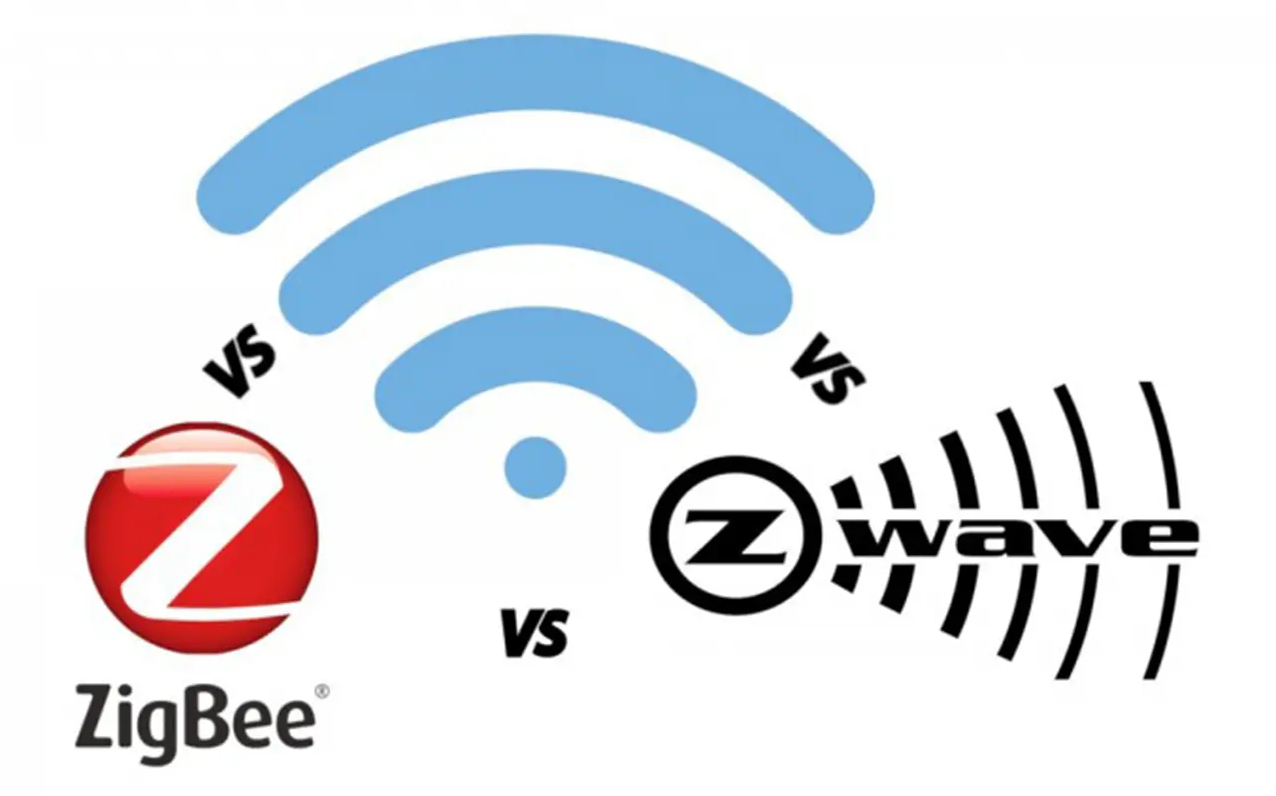The landscape of smart home technology is vast, offering various wireless communication protocols to connect and control devices. Among the most prominent are Zigbee, Wi-Fi, and Z-Wave. Each has its unique characteristics, strengths, and considerations. In this article, we will compare Zigbee, Wi-Fi, and Z-Wave to help you make an informed decision for your smart home installation.
-
Communication Protocols:
-
Zigbee: Zigbee operates on a low-power, short-range wireless protocol (IEEE 802.15.4). Its mesh networking capability allows devices to relay signals, creating a robust and scalable network.
-
Wi-Fi: Wi-Fi (IEEE 802.11) is a ubiquitous wireless standard known for its high data transfer rates and widespread use. Wi-Fi devices connect directly to the home network, offering seamless integration into existing setups.
-
Z-Wave: Z-Wave is a wireless communication protocol designed specifically for home automation. It operates on a sub-1GHz frequency, minimizing interference and providing reliable communication between devices.
-
-
Power Consumption:
-
Zigbee: Zigbee devices are known for their energy efficiency, making them suitable for battery-powered devices like sensors. The mesh network architecture enables devices to communicate efficiently, extending battery life.
-
Wi-Fi: Wi-Fi devices generally consume more power compared to Zigbee. While this may not be a concern for devices connected to a power source, it can impact the battery life of wireless devices.
-
Z-Wave: Z-Wave devices are designed with low power consumption in mind, making them suitable for battery-operated devices. This is particularly advantageous for devices placed in areas without easy access to power outlets.
-
-
Range:
-
Zigbee: Zigbee is ideal for short to medium-range communication within a smart home. The mesh network allows signals to hop between devices, extending the effective range.
-
Wi-Fi: Wi-Fi offers a longer range compared to Zigbee, making it suitable for devices spread across larger homes. However, the range can be affected by obstacles like walls and interference.
-
Z-Wave: Z-Wave provides a reliable range suitable for typical home sizes. Its sub-1GHz frequency allows signals to penetrate obstacles more effectively than higher-frequency alternatives.
-
-
Interference and Reliability:
-
Zigbee: Zigbee operates on the 2.4 GHz frequency, which is susceptible to interference from other devices like Wi-Fi routers and microwaves. However, the mesh network enhances reliability by providing alternative communication paths.
-
Wi-Fi: Wi-Fi networks can face interference in crowded environments, but advancements like dual-band and tri-band routers help mitigate these issues.
-
Z-Wave: Z-Wave’s sub-1GHz frequency reduces interference from other wireless devices, contributing to its reputation for reliable and interference-resistant communication.
-
-
Device Compatibility:
-
Zigbee: Zigbee devices may require a Zigbee hub or coordinator for proper integration. Ensure compatibility with your chosen smart home ecosystem before purchasing Zigbee devices.
-
Wi-Fi: Wi-Fi devices integrate seamlessly with home networks, and many smart home platforms support Wi-Fi devices out of the box.
-
Z-Wave: Z-Wave devices typically require a Z-Wave hub or controller for integration. Many smart home systems support Z-Wave devices, but compatibility should be confirmed.
-
The choice between Zigbee, Wi-Fi, and Z-Wave depends on your specific requirements, home layout, and existing devices. Zigbee excels in low-power applications and mesh networking, Wi-Fi offers high data transfer rates and widespread compatibility, while Z-Wave provides a reliable and interference-resistant option. Understanding the unique features of each protocol is crucial for building a smart home that suits your needs and preferences.
| Criteria | Zigbee | Wi-Fi | Z-Wave |
|---|---|---|---|
| Communication Protocol | Low-power, short-range (IEEE 802.15.4) | High data transfer rates (IEEE 802.11) | Low-power, sub-1GHz |
| Mesh Networking | Yes (Devices act as repeaters, forming a mesh) | No | No |
| Frequency Band | 2.4 GHz | 2.4 GHz (5 GHz for dual-band routers) | 800-900 MHz (Sub-1GHz) |
| Data Transfer Rates | 20-250 Kbps | Up to several Gbps | 9.6/40/100 Kbps (depends on region) |
| Power Consumption | Energy-efficient, ideal for batteries | Moderate to high | Energy-efficient, suitable for batteries |
| Range | Short to medium range | Long range | Reliable for typical home sizes |
| Topology | Mesh network | Point-to-point (Devices connect directly to the router) | Mesh network |
| Interference Resistance | Susceptible to 2.4 GHz interference | Potential interference in crowded environments | Reduced interference from other wireless devices |
| Reliability | Mesh networking enhances reliability | Reliability depends on network congestion | Known for reliability |
| Device Density Support | High (Mesh network handles multiple devices efficiently) | High (Depends on router capacity) | High (Z-Wave operates in a separate frequency band) |
| Device Compatibility | Requires Zigbee hub or coordinator | Integrates seamlessly with home networks | Requires Z-Wave hub or controller |
| Security Features | Supports AES-128 encryption | Various security protocols (WEP, WPA, WPA2, WPA3) | Supports AES-128 encryption and security features |
| Network Scalability | Scalable due to mesh topology | Scalable, but network congestion can occur | Scalable with multiple devices |
| Common Applications | Smart home sensors, actuators, lighting controls | Smartphones, tablets, laptops, smart home devices | Smart home sensors, actuators, locks, thermostats |
| Popular Smart Home Platforms | SmartThings, Philips Hue, Amazon Echo Plus | Amazon Alexa, Google Home, Apple HomeKit | SmartThings, Vera, HomeSeer |


Leave a Reply